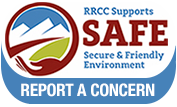Course Accessibility
This page is intended to provide resources to help faculty and staff develop web accessible content. Accessibility information for students taking online courses can be found on the Accessibility Services website.
Red Rocks Community College's Web Accessibility Procedure states that all web-based information for use by faculty, staff, students, prospective students, and the public must be accessible. In implementing this procedure, RRCC faculty and staff will employ principles of Universal Design and the World Wide Web Consortium's WCAG 2.0 standards in the design, development, implementation, and enhancement of all web-based information and services.
Best Practices
A group of Red Rocks Community College staff and faculty have compiled a short list of Best Practices for Accessible Course Design. This cheat sheet is intended to provide a brief summary of key accessibility issues that need to be addressed when producing any course related content. The Accessibility Guides below will help you to implement these best practices. While you are addressing accessibility needs for your coworkers and students, it might help to review our guide that looks at Why We Need Web Accessibility. If you need help ensuring that your course content or web based files are accessible stop by Instructional Technology. We're here to help!
Accessibility Guidelines
These guidelines are based on the World Wide Web Consortium's (W3C) WCAG 2.0 AA standards, which will help make your content more accessible to a wider range of people with disabilities including blindness and low vision, deafness and hearing loss, learning disabilities, cognitive limitations, limited movement, speech disabilities, photosensitivity, and combinations of these disabilities. The broader intention of the W3C standards is to make web content more accessible to users in general.
These step-by-step instructions will help you make these document types accessible. Click on the icon for the software you are using.
Accessibility Checking Tools
A number of automated, accessibility testing tools provide a good quick check for accessibility of HTML web pages, Microsoft Office files, PDFs, and even your D2L pages. You can find a list, as well as details on how to run accessibility checkers in Microsoft Office products on our Accessibility Checkers page. However, to be fully accessible, your documents and files may still need to be checked by a human to verify the following questions have been answered:
- Are the documents properly structured with headings, column headers for tables, and is the navigation easy to follow and understand?
- Are all hyperlinks clear and concise, and do they make sense out of context?
- Are all embedded media and interactive widgets on the page keyboard accessible and properly captioned?
- Do all non-decorative images have Clear, Concise, and Contextual ALT text?














